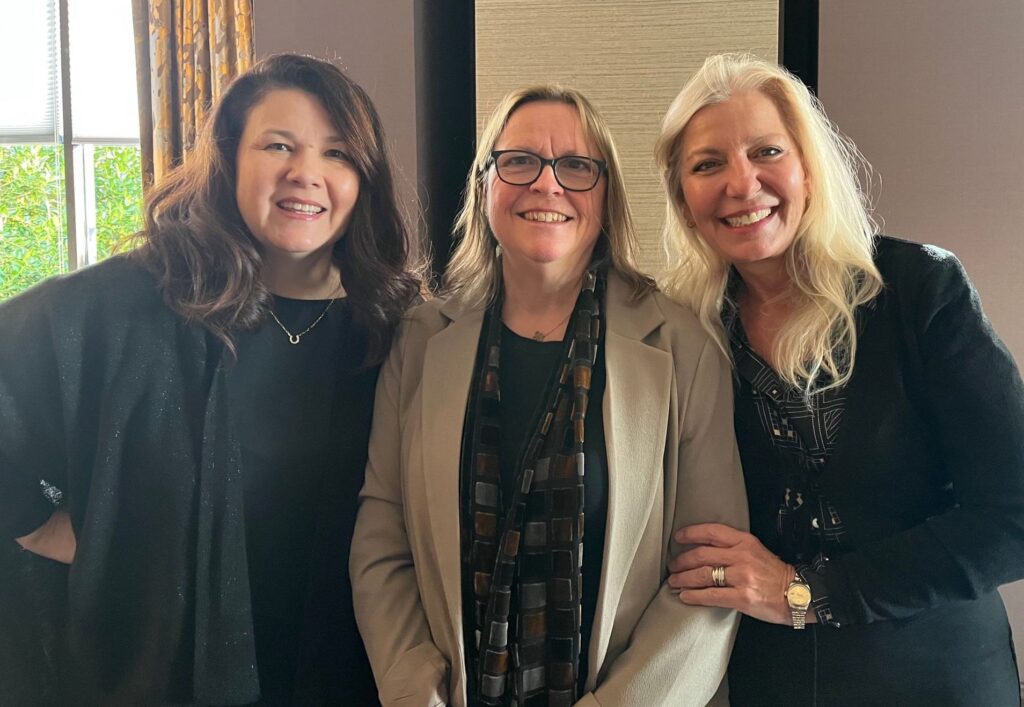October Culture Power Breakfast: Glen Echo Park Saved by Artists, Dancers
By • October 23, 2023 0 1018

When Glen Echo Amusement Park closed in 1968, its attractions — the 1921 Dentzel Carousel, the 1923 Scooter (later Dogem and now the Bumper Car Pavilion), the 1933 Spanish Ballroom and others — went to seed. The consensus: Tear them down.
It didn’t happen. Because by the time the National Park Service took ownership of the Maryland site, along the Chesapeake and Ohio Canal opposite Cabin John, artists and dancers had seen opportunity.
At The Georgetowner’s Oct. 19 cultural breakfast, Katey Boerner, CEO of the Glen Echo Park Partnership for Arts and Culture, set the scene: “It was the ’70s — think ‘hippie.’ ”
The contra dance community was browbeating officials to repair the Spanish Ballroom, said to have the top dance floor on the East Coast, though, as Boerner told it, raccoons were doing some dancing overhead.
She credited the National Park Service with establishing arts programming on the site, and Montgomery County Executive Douglas Duncan with getting the buildings stabilized in the 1990s. But it was clear that the nonprofit Boerner has headed since its 2002 creation took the ball from the county and ran with it.
The woman who hired her, philanthropist and then-board chair Carol Trawick, was at the breakfast, as were other Glen Echo Park Partnership board members, including Theresa Nielsen of series sponsor Long & Foster. “Carol’s and my minds melded,” said Boerner, who had returned to the D.C. area, where she spent her childhood, to serve as Share Our Strength’s CFO two years earlier.
Once onboard, she was tasked with leading a $23-million capital campaign to renovate the facilities where dancers danced, the Folklore Society of Greater Washington presented its annual festival, Adventure Theatre mounted children’s shows and other partners taught painting, sculpture, ceramics, glass art and photography. Supplementing the campaign, the arts partners “invested in their own fit-out,” she said.
Among Glen Echo’s first artists in residence, Boerner proudly noted, were Jeff Kirk, who has taught ceramics since 1975, and sculptors Jim Sanborn and the late Raya Bodnarchuk.
A key goal for Montgomery County was for the park to become self-sustaining: “We don’t have you in our budget,” she was told. Over time, however, the county has become more engaged, for instance as an intermediary with the National Park Service, whose attention can be hard to get in site-rich Region 1, she pointed out.
There remains no dedicated funding source, and the Partnership has to “fight this myth that we have one,” Boerner said. Recently, building maintenance accounts have been set up, funded by a charge built into park fees.
Pre-Covid, some 350,000 visitors came to the park annually, generating around $8 million in economic activity, according to Boerner. The growth — and, now, rebound — in attendance is partly due to events launched by the Partnership, such as opening and closing days for the carousel season and the Echo Arts Festival, which, in its second year, earlier this month, featured programming by the Washington Revels and the National Museum of the American Latino. Another highlight: over Labor Day weekend, the park held a popular international dance showcase along with an art show (“Art sales came back first” after the pandemic drop-off, Boerner noted).
The Partnership has also worked with the National Park Service and others to tell the civil-rights story connected with Glen Echo, which, like other D.C. organizations, “must grapple with a history drenched in racism.” In 1960, Howard University students protesting the park’s segregation were denied access to the Dentzel Carousel and picketed the park; some white neighbors joined them and American Nazi Party members showed up for a counter-protest. Several of the surviving protesters have participated in park programs and a feature documentary, “Ain’t No Back to a Merry-Go-Round,” by producer/director Ilana Trachtman will soon be released.
In response to a question about the adjacent Clara Barton National Historic Site, acquired by the National Park Service along with the defunct amusement park, Boerner said that NPS was rehabbing the house where the American Red Cross founder spent her last years and that the Partnership hopes to be involved in future programming.
“We have a bit of an identity crisis … but really we use that to our advantage,” Boerner explained, adding: “We’ve leaned into the complexity.” Above all, the Partnership acts as “passionate advocates for the park,” which she called “a truly strange, beautiful and unique place.”
Emphasizing the Partnership’s “ability to connect and collaborate,” Boerner suggested that there were opportunities for the park to strengthen its ties to Georgetown. Formerly linked by the Glen Echo Railroad, then by trolley, Glen Echo and Georgetown are still connected three ways by water: the Potomac River, the C&O Canal and the pipes running under MacArthur Boulevard. “Our histories are intertwined and interconnected,” she said.

